April 2021 news review – a photo journal
Posted by Gavin Quinney on 30th Apr 2021
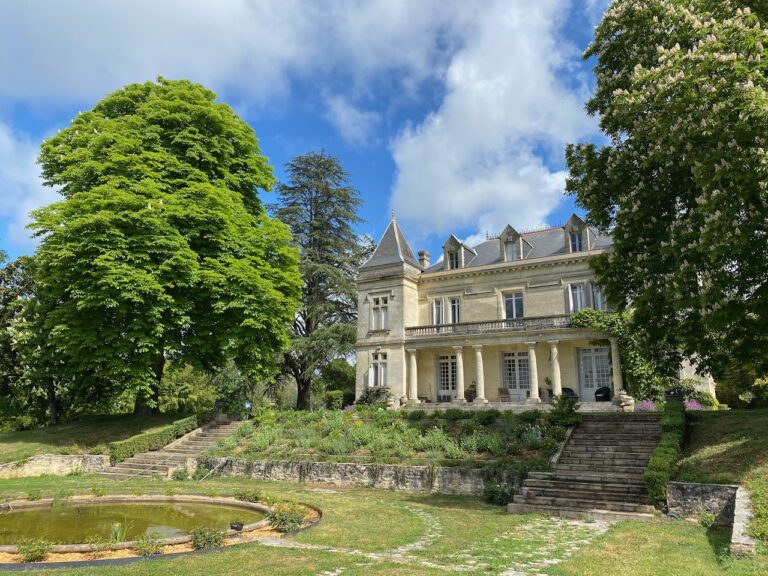
An extraordinary month, and not what we had in mind when we sent out our photo journal ‘Preparing for Spring’ at the end of March.
Two main events this month – the frost in the first half of April and the Bordeaux en primeur tastings in the second. Here’s a series of images to give you a sense of both, and an update on the impact of the frost.
In this missive:
- Rick Stein at Bauduc video
- Update on the frost – April photo journal part 1
- En primeur tastings – April photo journal part 2
All the best
Gavin & Angela Quinney
PS To view just the images in 'photo albums', click here.'
Rick Stein at Château Bauduc video
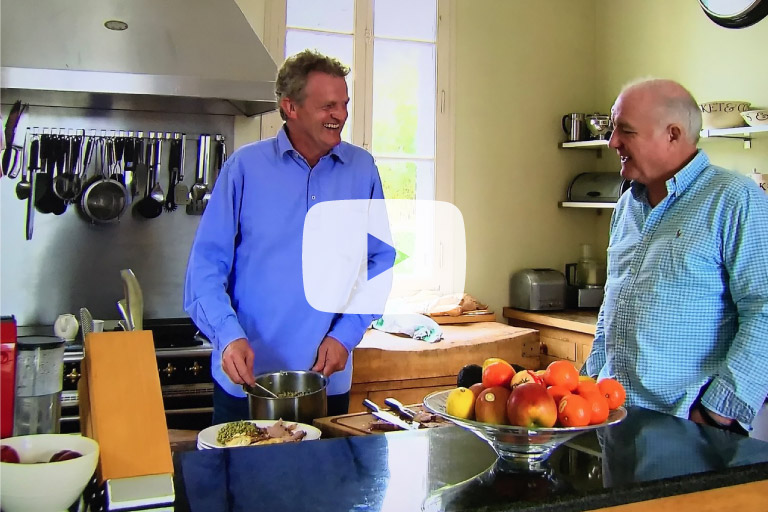
In case you missed it, we posted a video of Rick Stein’s visit to Bauduc for his Long Weekend series on the beeb, which kicked off with the first showing of his trip to Bordeaux exactly five years ago at the end of April. Click on the image above for a link to the video. As well as the lunch and harvest at Bauduc, there’s the amusing tasting when we invited Rick and his son Charlie to be judges in a local wine competition.
Update on the frost – April photo journal part 1
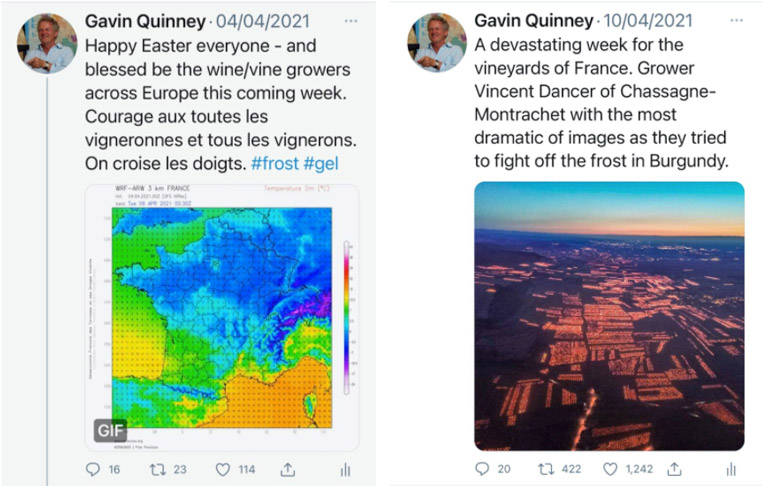
So April began with a nervous Easter weekend. A week later it was clear that the untimely frost, coming so soon after budbreak, had caused considerable damage in wine regions right across France.
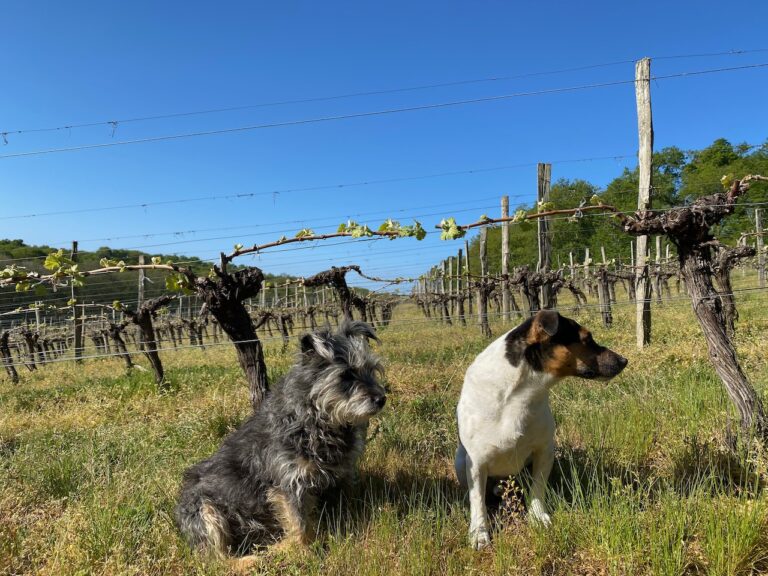
We were anxiously waiting for the sub zero temperatures. This Sauvignon Blanc was at a tender stage of newness. 6 April.
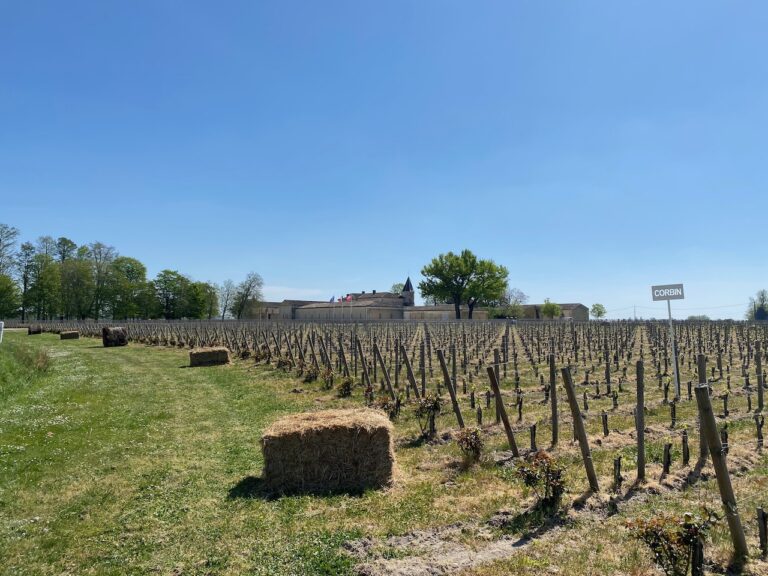
Growers across Bordeaux were gearing up for the early morning frosts, such as positioning hay bales for setting alight, like here at Château Corbin in Saint-Emilion. 5 April.
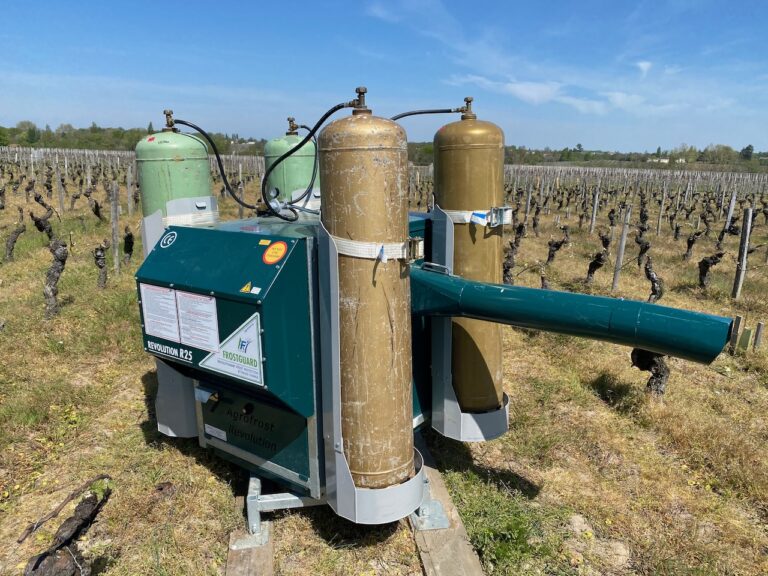
Likewise, they had outdoor heaters at the ready. Not the sort of thing you’d use to warm your guests on a patio.
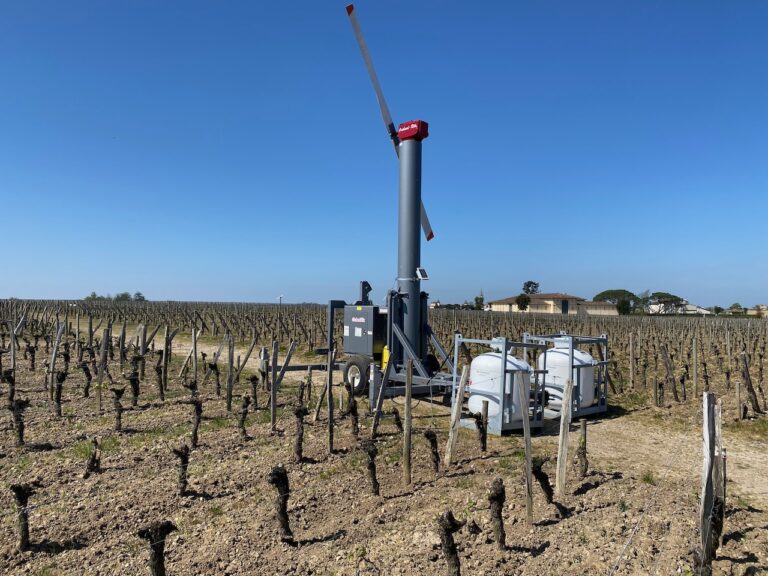
A wind machine in the vineyard of Château Gazin in Pomerol, with Petrus in the background. 5 April.
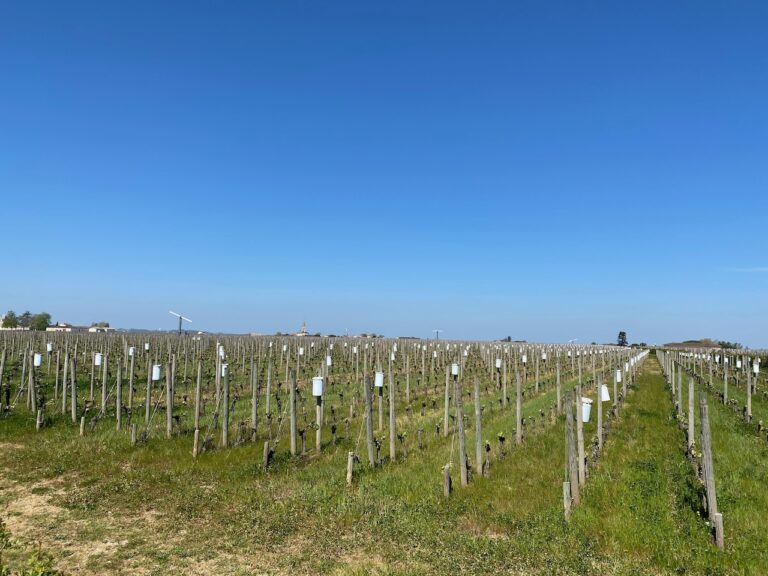
At Château L’Evangile next door they were busy positioning their anti-frost pots (or candles) on Easter Monday. In all, they had something like 7,000 ‘bougies’ for 20 hectares or so.
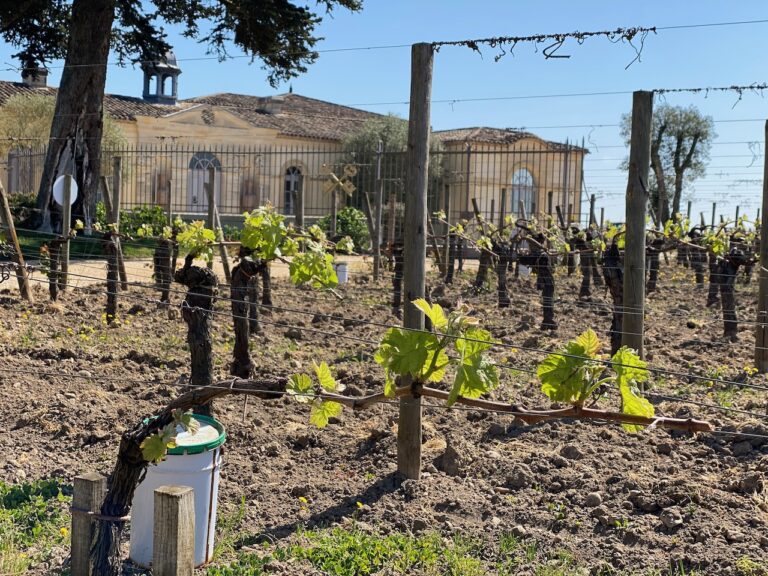
Here are the Merlot vines at Petrus, protected by candles and wind machines. It’s only 25 minutes up the road from us.
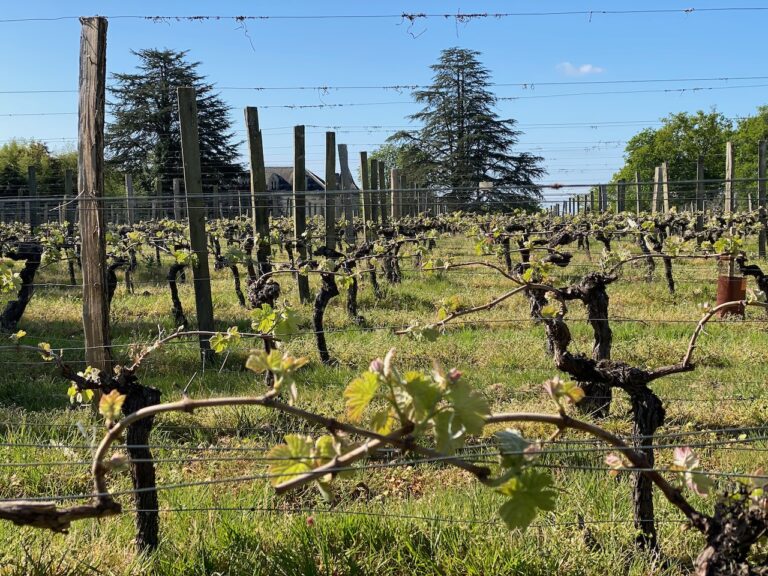
Here are the Merlot vines at Château Bauduc, protected by crossing everything we could. Fingers, mostly.
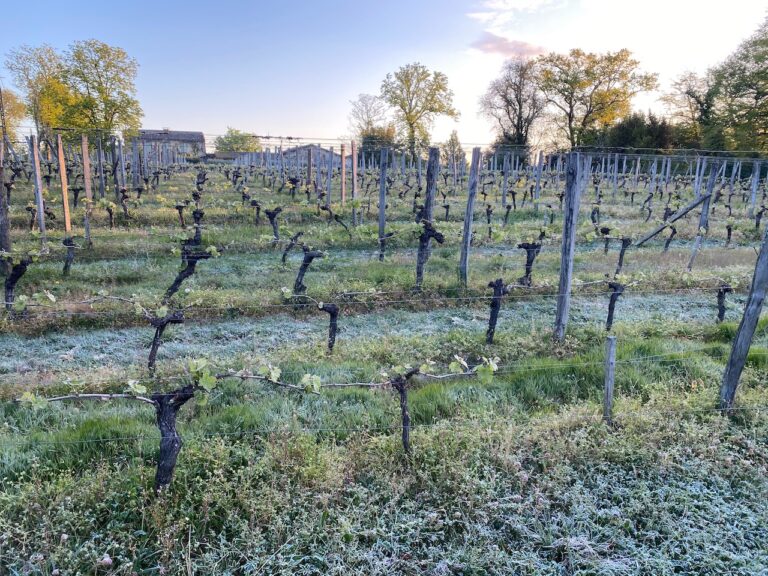
The early hours of Wednesday 7th saw the first morning frost to hit Bordeaux. This is the Merlot opposite the farmhouse.
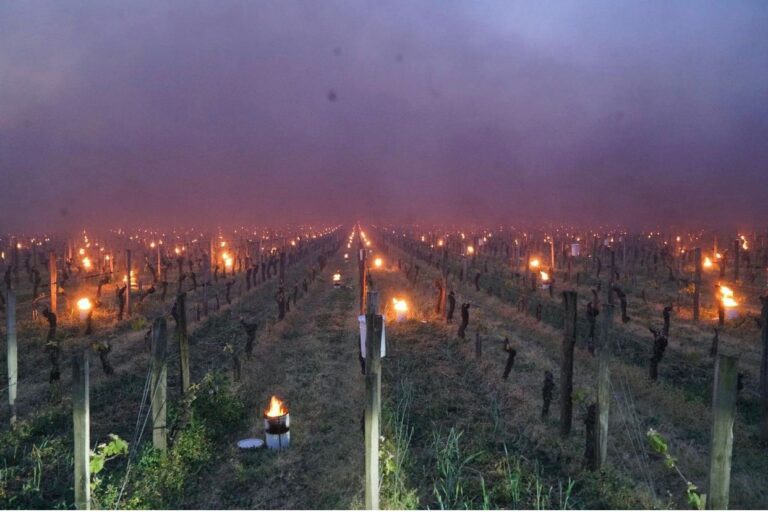
It didn’t actually seem that cold at Bauduc in the early hours. Elsewhere, they were lighting those anti-frost candles – photo courtesy of Jonathan Ducourt, whose family own vineyards in the Entre Deux Mers and Saint-Émilion.
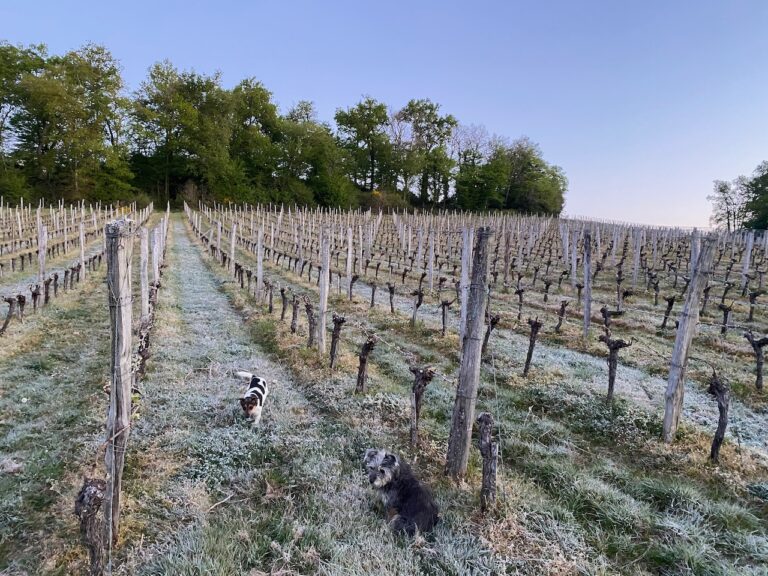
Pavie and Margaux in the Sauvignon Blanc below the château. The coldest moment is, somewhat bizarrely, at first light.
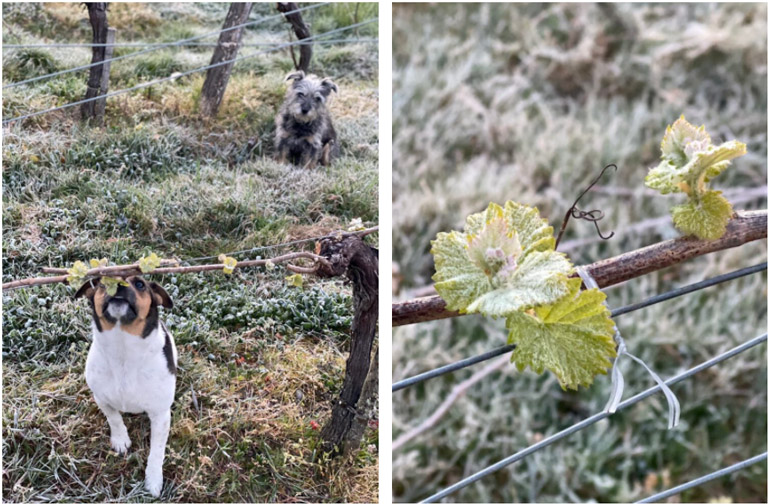
The new growth made the crop vulnerable. Unless you’ve got some candles to light, machines to operate or bales to burn, there’s little you can do. A dog sniffing the branches brings little respite from the anxiety.
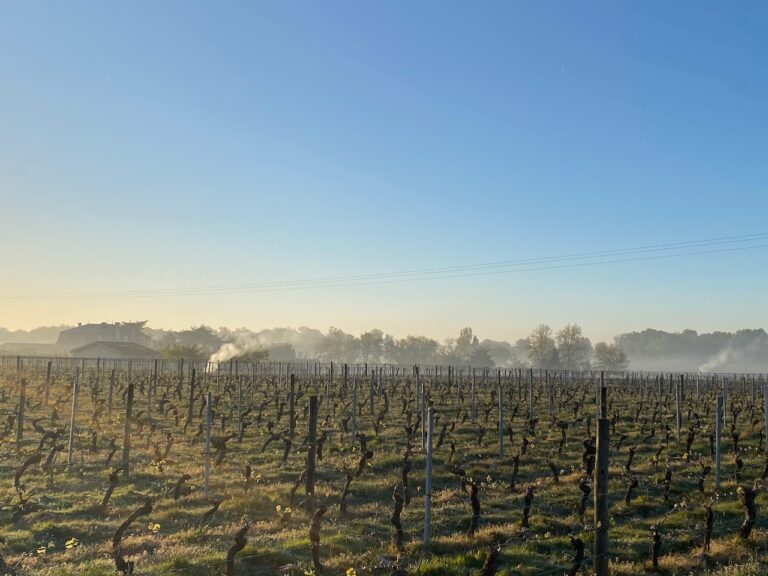
Smoke was billowing across the valley from our neighbours beyond the woods so I went round to see what they were up to.
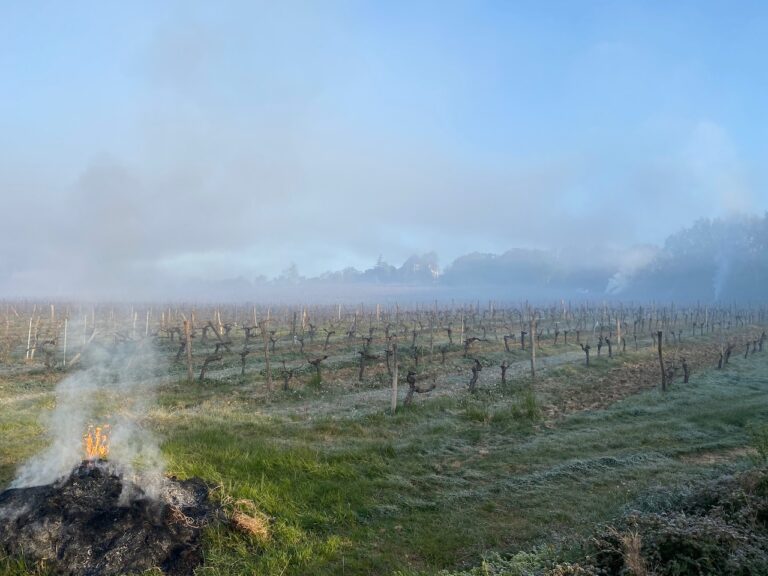
A few miles down the road, the air was thick and acrid with smoke.
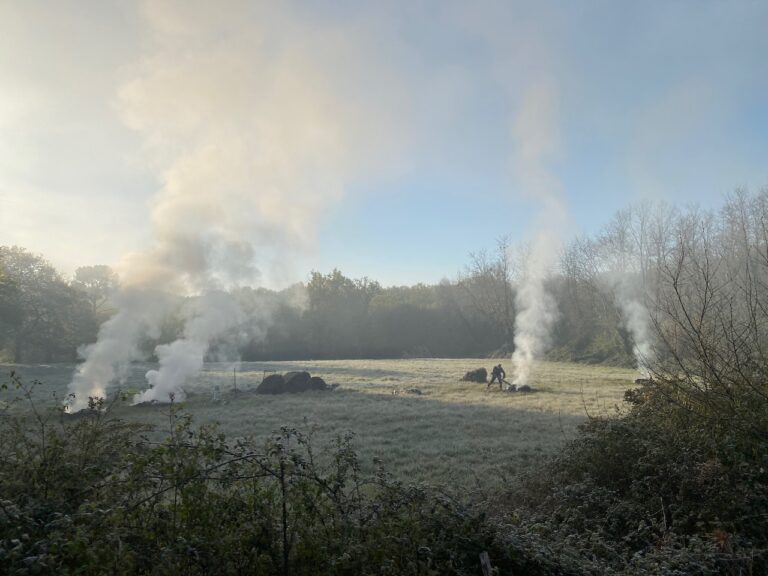
It’s an anti-frost technique that is not entirely convincing.
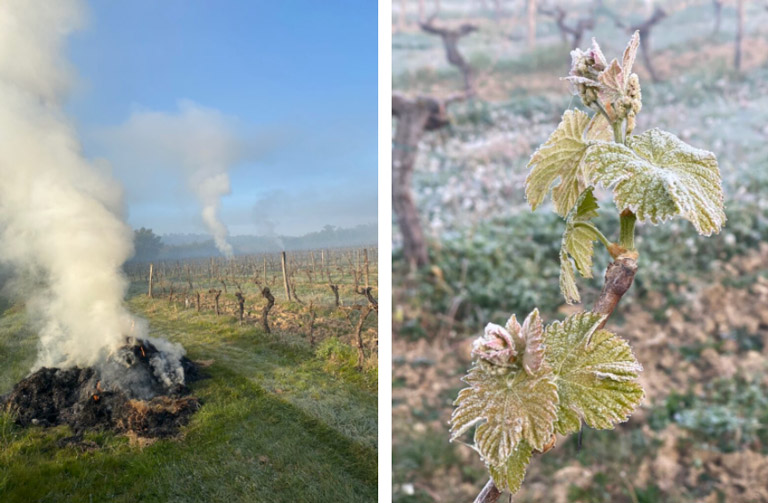
This block of Merlot, despite their best efforts, was lost completely. The leaves and buds had frozen.
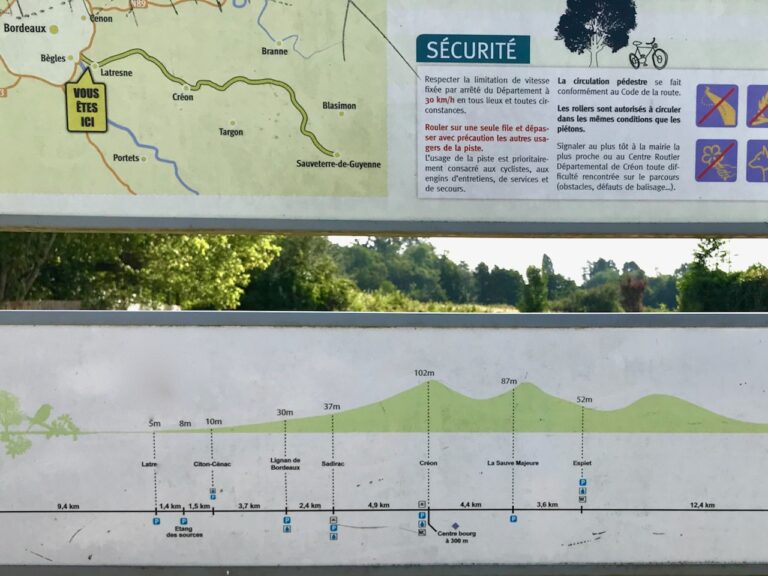
When we bought Bauduc in 1999, we had little idea that having a higher altitude would work in our favour in such situations. The last serious spring frost before that had been in April 1991. This is the sign for the cycle track that runs 50kms from Bordeaux to Sauveterre, showing Créon in the middle at 102 metres above sea level.
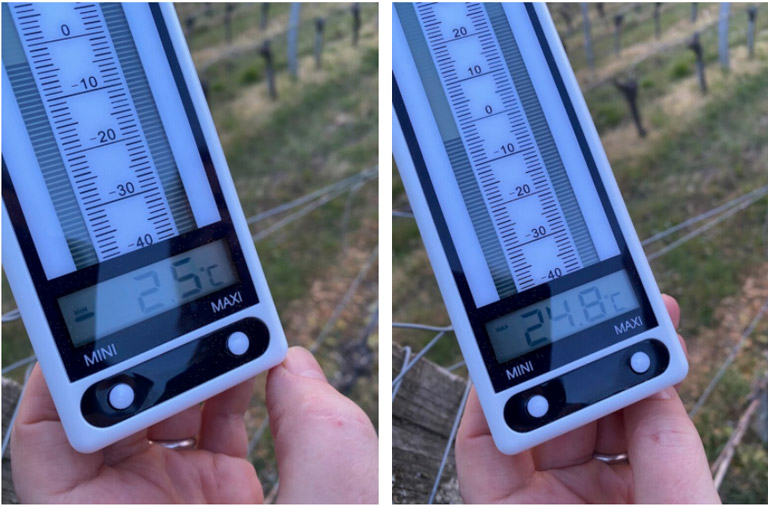
The temperature in our Sauvignon Blanc that morning had dropped to -2.5ºC. Had it been a degree or two colder, we’d have lost a lot more. A slightly bizarre feature of that week was just how sunny it was – that same afternoon, it had risen to 24.8ºC.
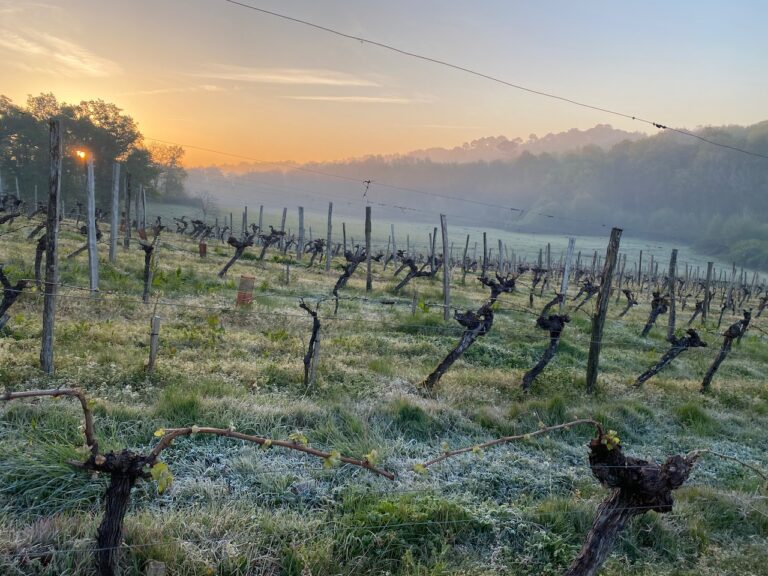
We had another frost scare on the 8th, and again, shown here, on the 13th.
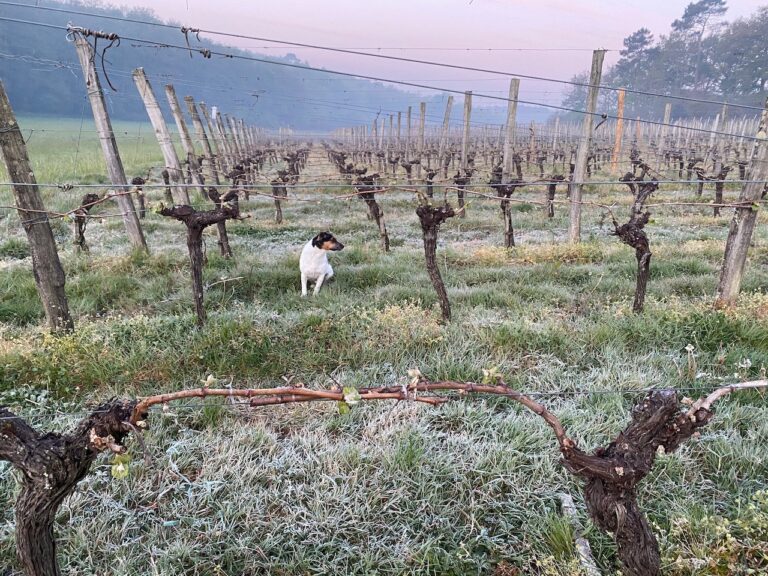
Once again, this Sauvignon Blanc on the lower slope was at risk.
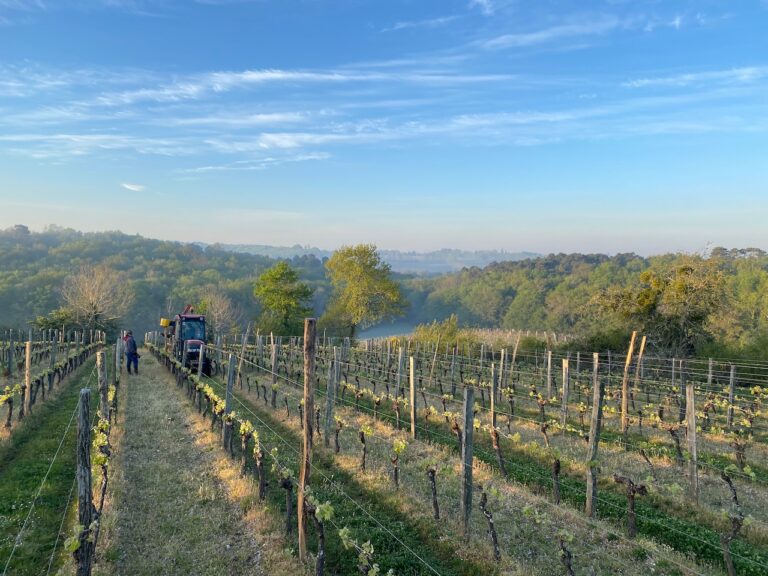
Regardless, the work in the vineyard continues. This is Merlot on higher ground where we’re knocking in replacement posts.
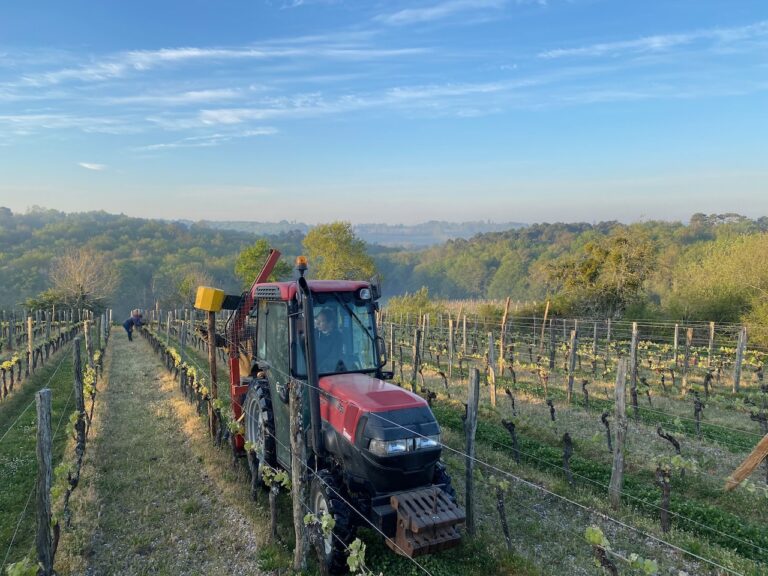
Nelly driving the tractor, while Daniel hammers the posts in. It can be dangerous work: many years ago, he left his hand in the wrong place.
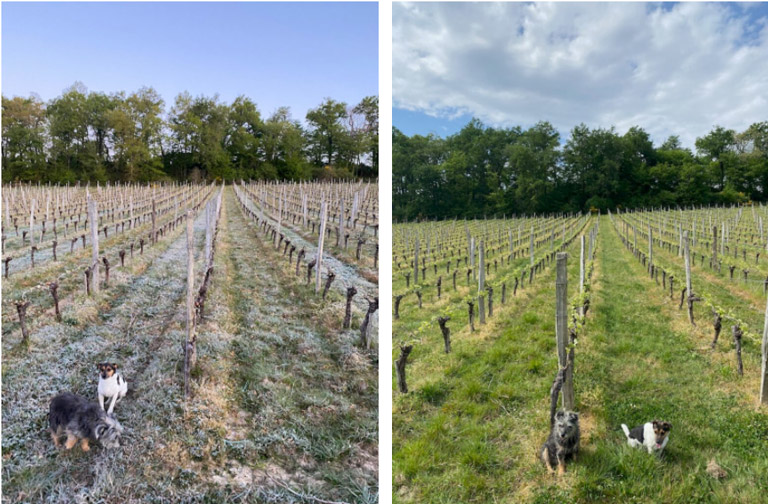
An update, three weeks on from the first frosts. The Sauvignon Blanc has mostly recovered but growth on the lower slopes has been slow after the shock to the system for the vines.
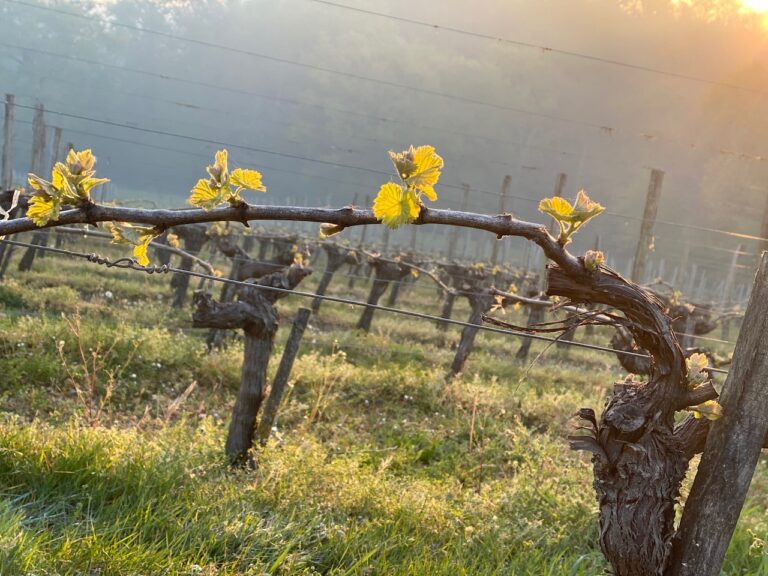
On the upper levels, we had lost very little Sauvignon Blanc. (8 April.)
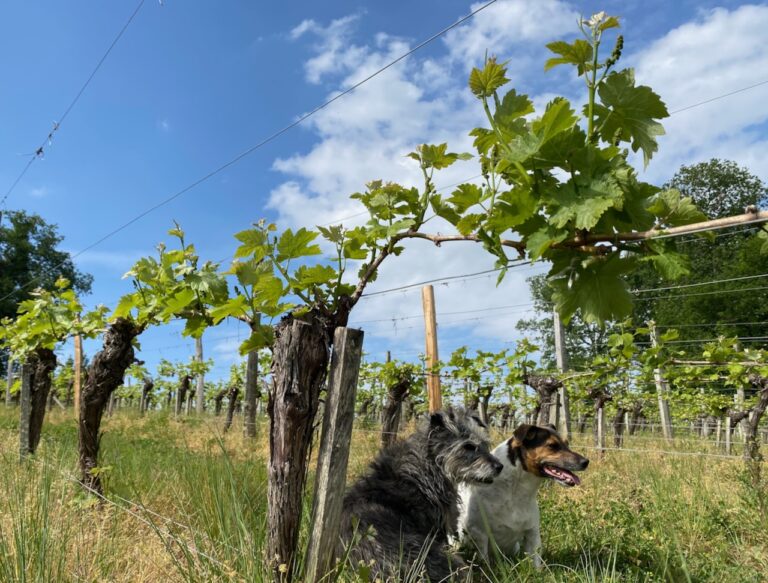
The Sauvignon Blanc is growing well now, for the most part, though there is one parcel which we’re waiting on. 28 April.
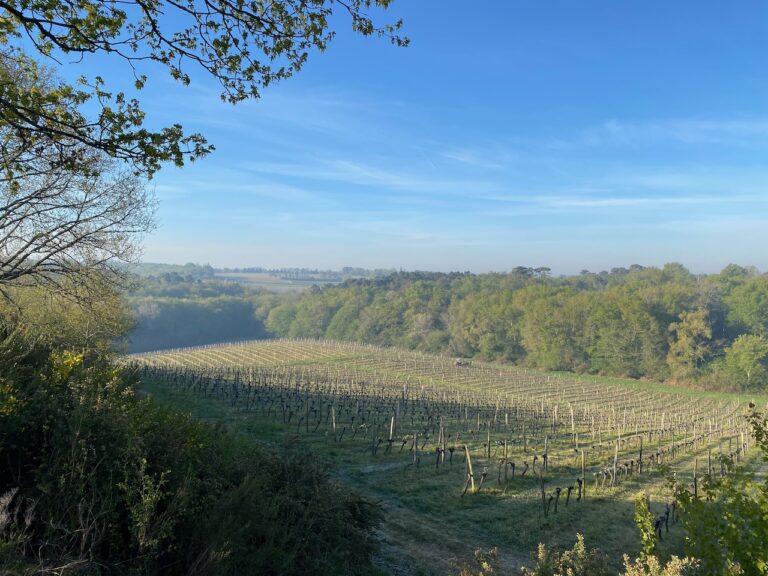
That’s the block called Montuard, with the Sauvignon below the trees in the distance. (8 April.)
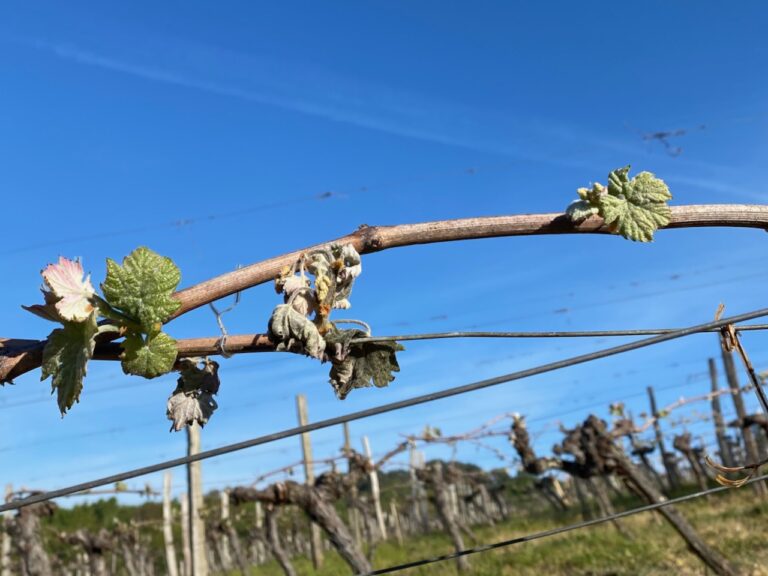
We have lost some Merlot on Montuard. But we have to look at this as a glass half full.
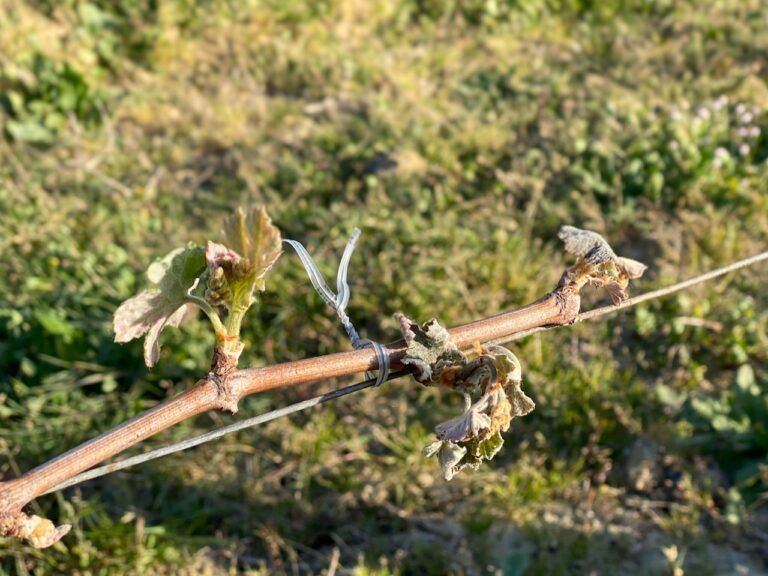
This was some Merlot on 8 April, the day after the first frost.
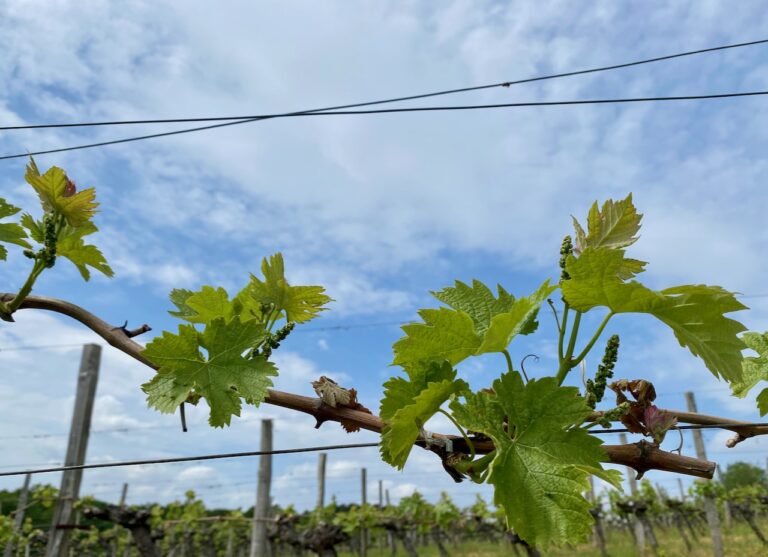
Here it is 28 April. Win some, lose some.
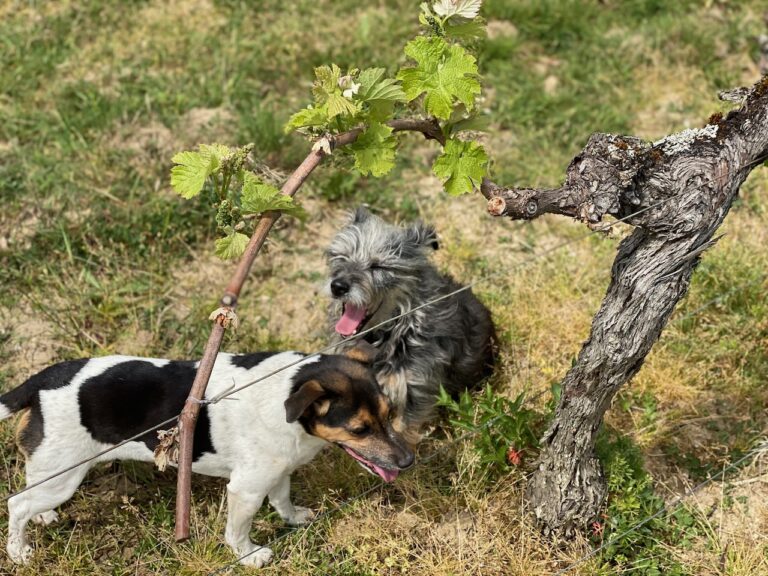
When people talk about areas having, say, a 40% loss, it could mean some vineyards are untouched while others lost everything. Or it could mean that 2 out of every 5 buds didn’t make it, like on this vine.
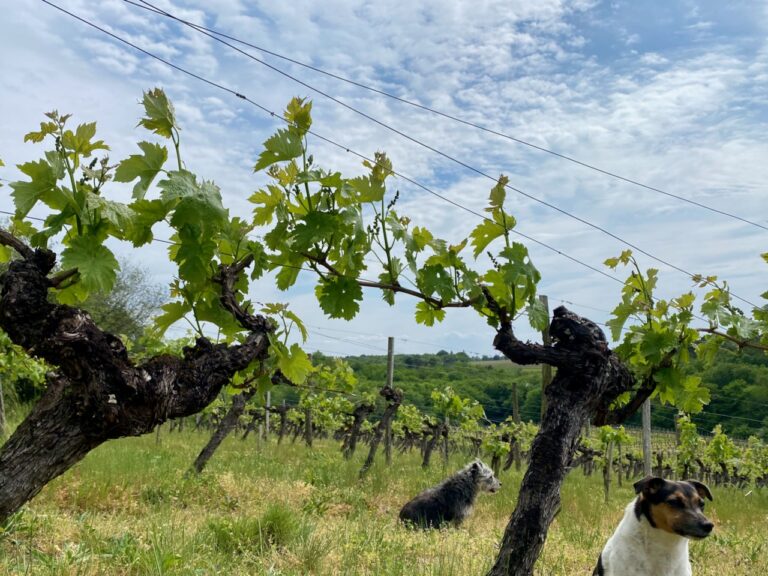
We lost about 10% of our Merlot, and a fraction more of the Sauvignon Blanc, we think. We’ve lost some Cabernet Sauvignon too but as it’s the last variety to grow we’ll see how it evolves.
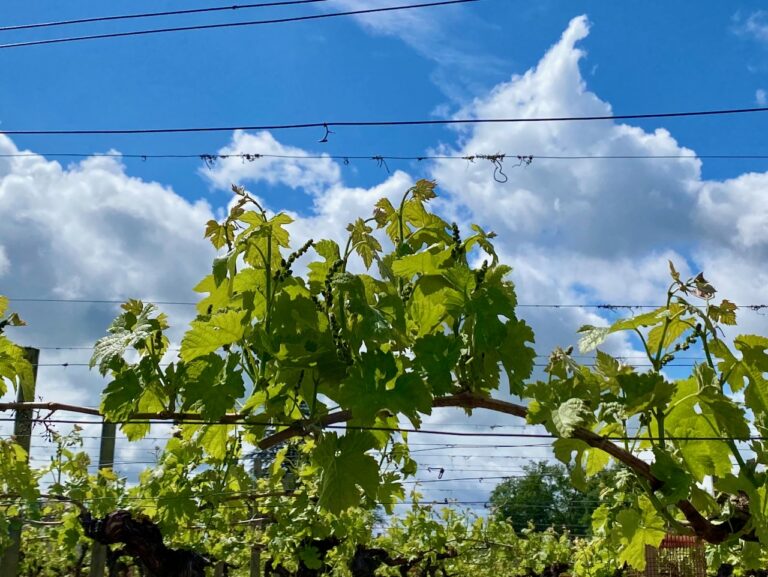
This is some of our Merlot 29 April, near the château, which is now in stark contrast to many of the vineyards around Bordeaux that were less fortunate.
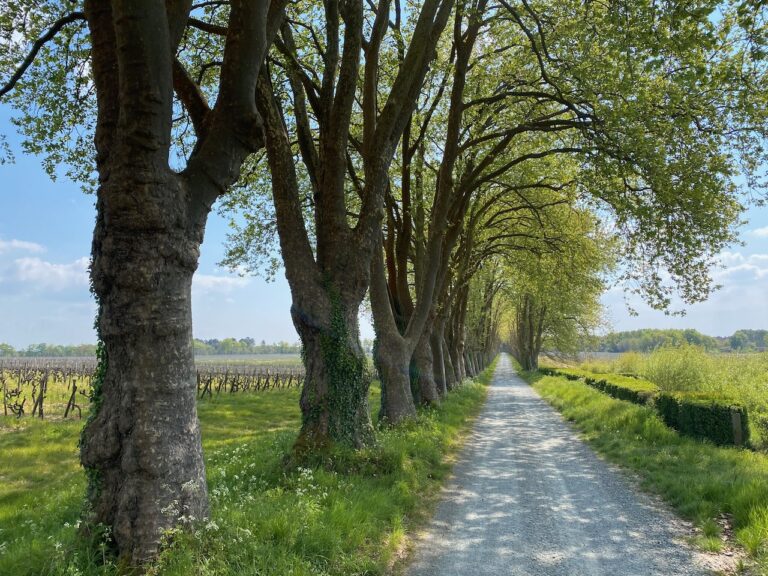
I’ve been popping out when time allows, like on Sunday 18 April. (‘Great excuse to get away, Gav. Love it,’ wrote a Mister Gilbey on Instagram.)
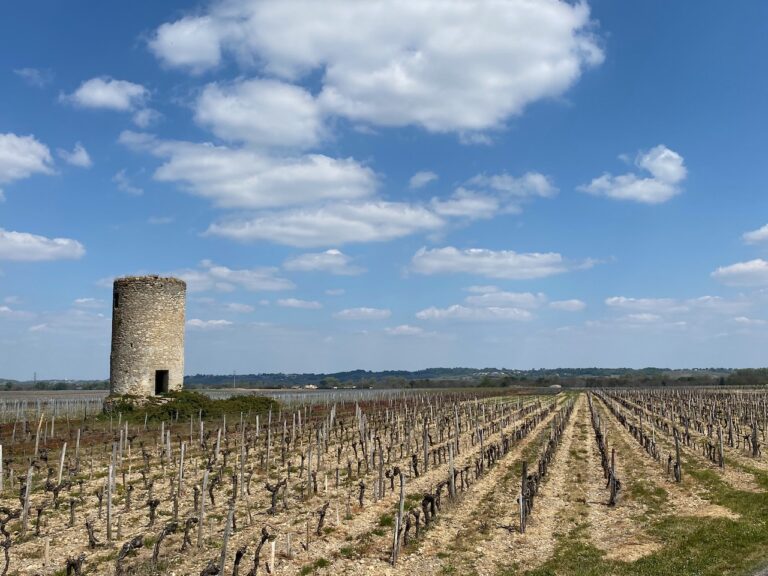
Many parts of Bordeaux have been badly impacted by the frost. The Graves for example, south of the city of Bordeaux, has seen significant losses. So too has Saint-Emilion – especially down in the valley – plus large areas of the Entre Deux Mers, the Côtes de Bordeaux, parts of the Médoc, and so on.
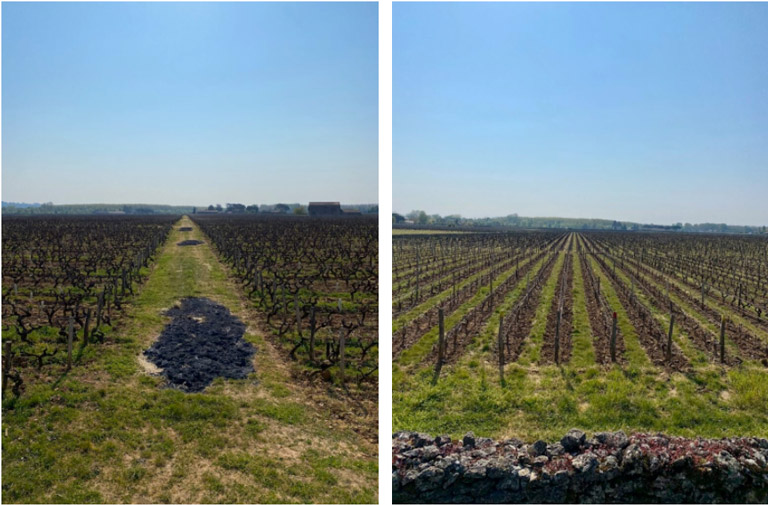
Near the Graves, the sweet white wine appellation of Barsac has lost much of the crop, sadly. I imagine these fires didn’t heat up the vineyards enough.
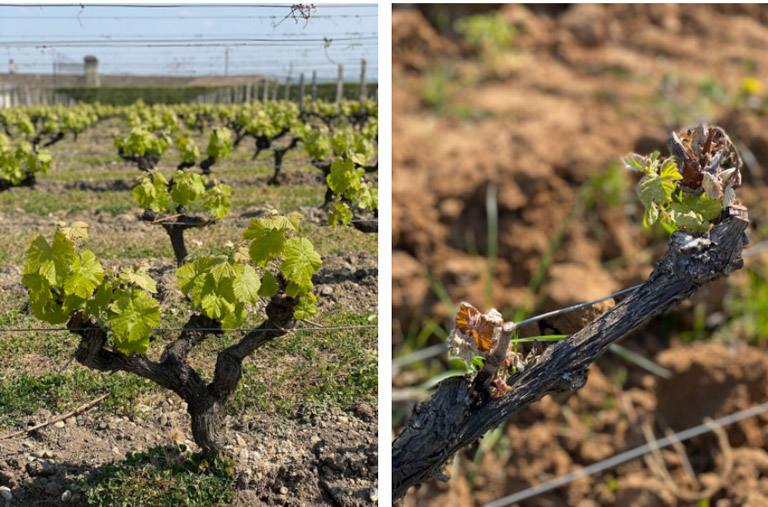
The contrast from one vineyard to another is clear to see. This is Sémillon from higher up, in Sauternes, and another in Barsac.
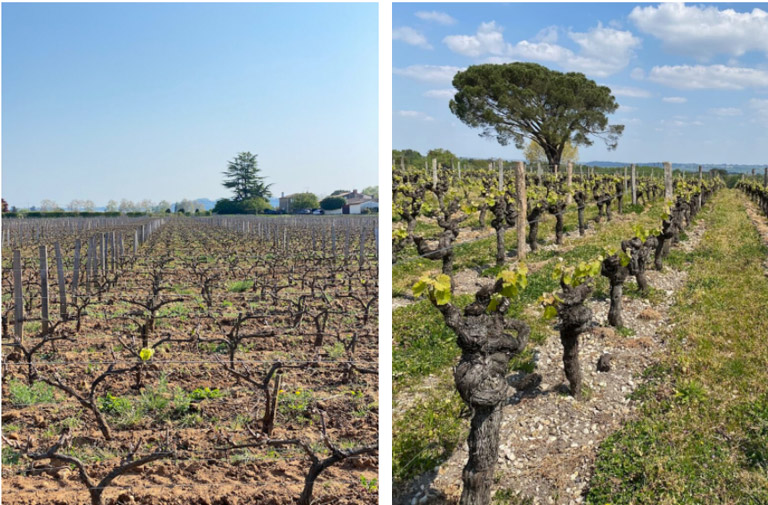
Young Sémillon in Barsac, with barely a leaf remaining, against older Sémillon in Sauternes nearby – again, higher up the hill.
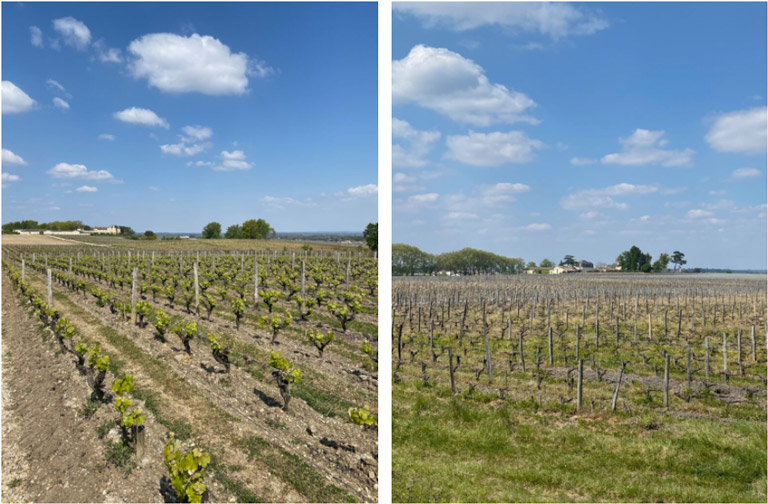
A few hundred metres separate these two famous estates in Sauternes. No loss versus significant loss. It’s worth noting that, beyond Barsac and Sauternes, relatively few of the top châteaux in Bordeaux have been badly impacted by the frost, either because they’re close to the Gironde estuary (a benign influence), high up on the limestone hillside of Saint-Emilion, in safer parts of Pomerol, on higher ground in Pessac-Léognan, and so on. I’ll be writing up a report of the situation across the region in May, all being well, once things are clearer. The map is almost complete, with some more joining of the dots required. Not forgetting that the all important flowering (floraison) is yet to come in late May and June.
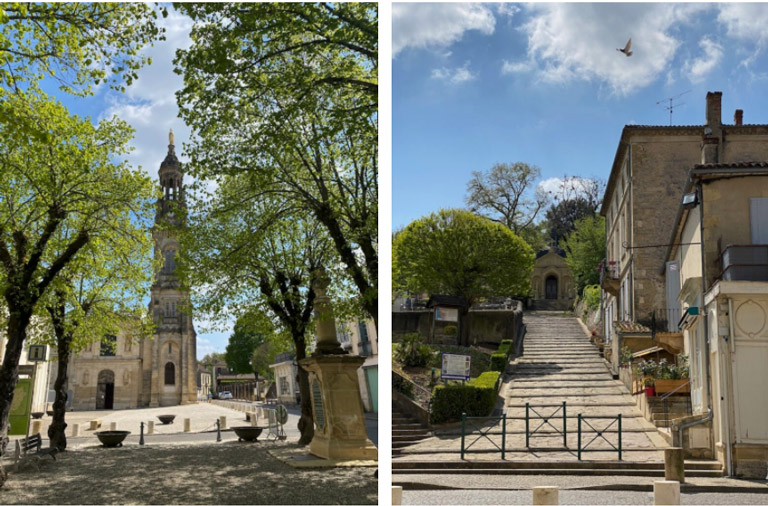
It’s a lovely, peaceful time to drive around. Like most days at the moment, in fact.
En primeur tastings – April photo journal part 2
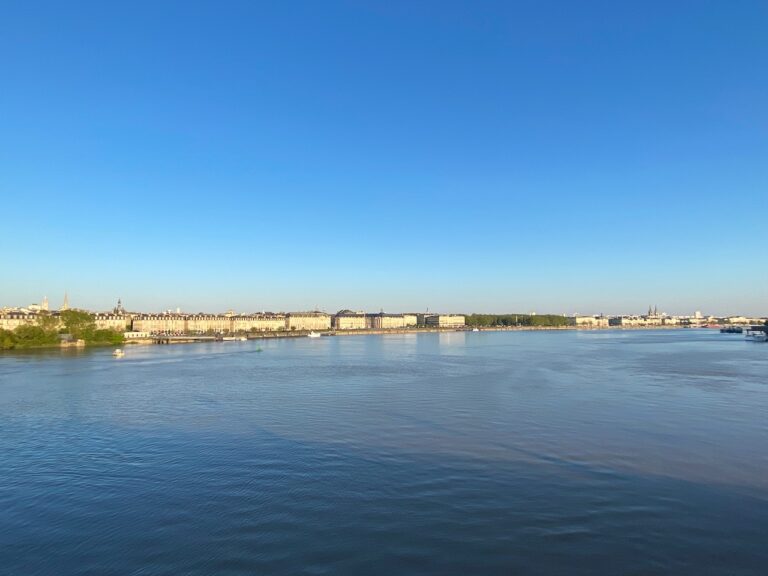
The city of Bordeaux and the river Garonne, from the Pont de Pierre. Luckily for us, there’s no need to drive as there’s a bus that goes to the centre of town.
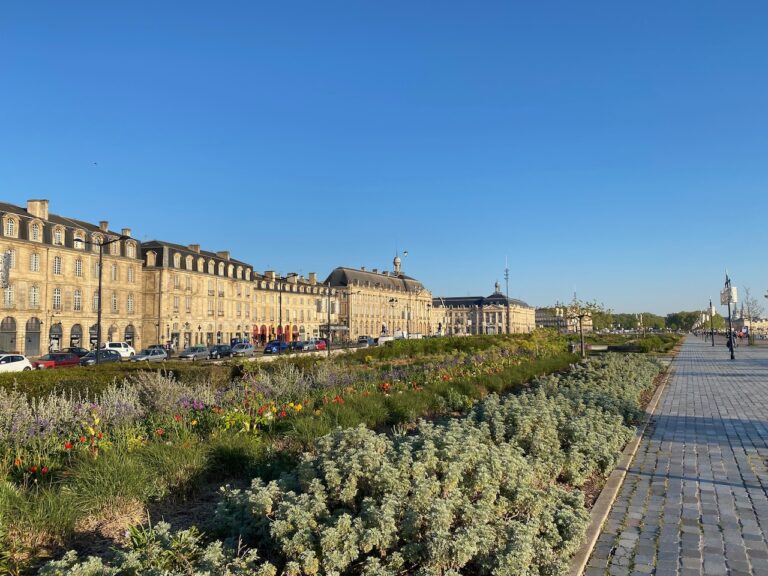
Along the pedestrian area of the quais (quays).
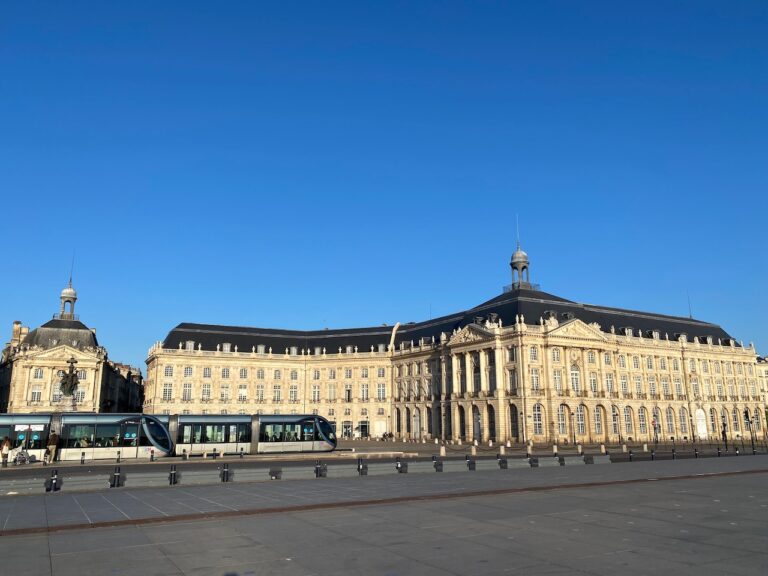
It’s not a bad time to visit an attractive city.
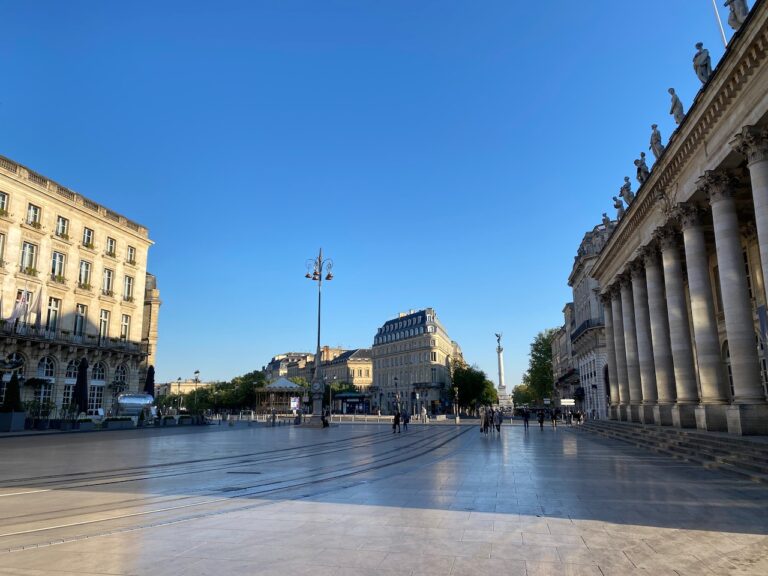
Unusually quiet in the centre, first thing, alongside the Grand Théatre.
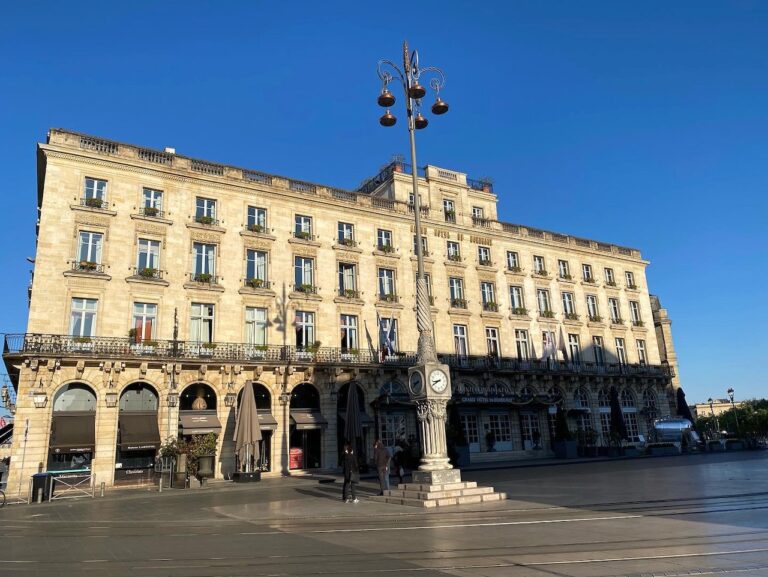
This trip is for a wine tasting by the Union des Grands Crus de Bordeaux in the Grand Hotel. Grand.
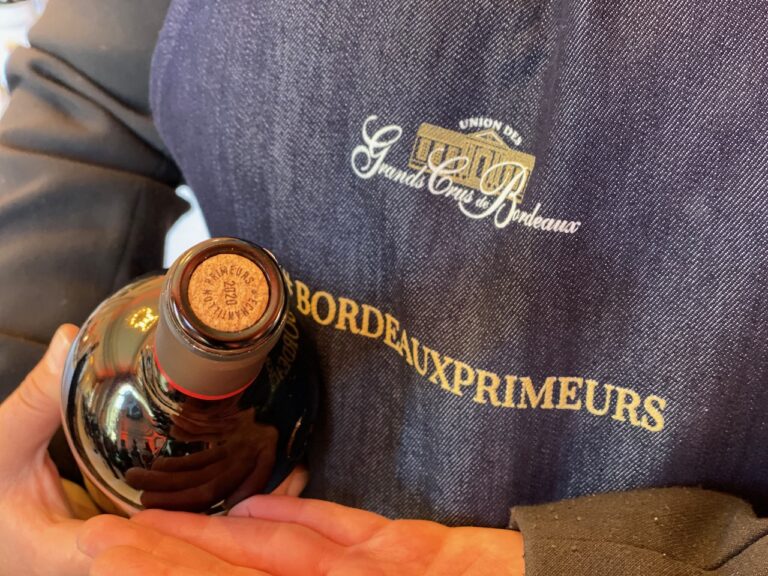
April is the month when the leading châteaux present their new vintage for tasting by critics and the wine trade. Selling their wine ‘en primeur’, when the wine is still in barrel, is “part of their DNA”. That’s what my friend Ronan Laborde, the President of the Union des Grands Crus, told me last year when I asked him if the en primeur campaign for the 2019s should take place in light of the pandemic.
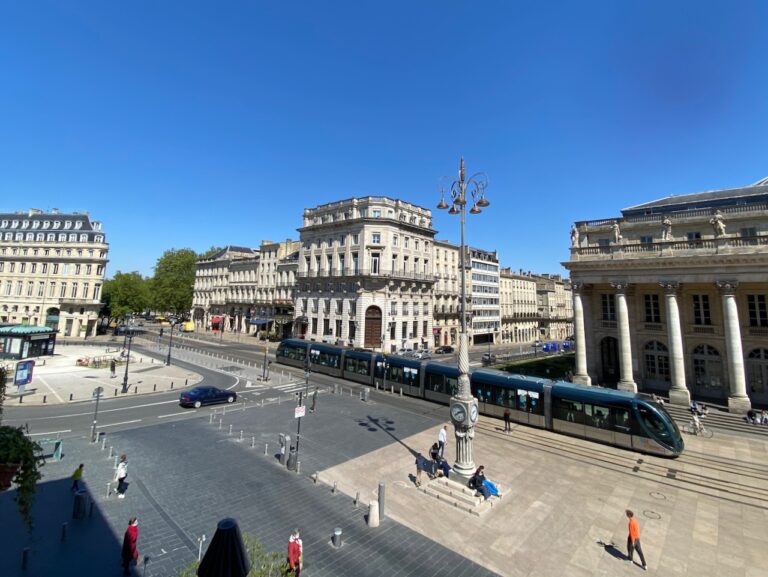
The view from the tasting room leaves one in a state of calm.
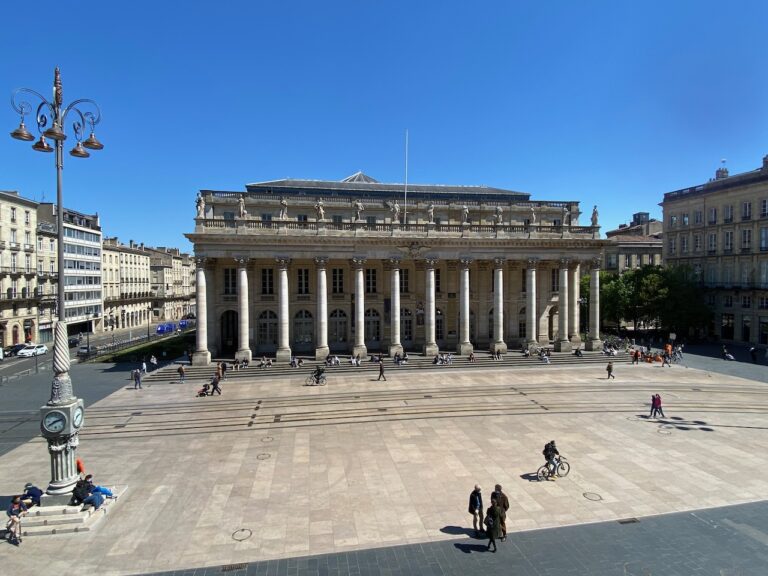
Le Grand Théatre opposite. Rare to see so few people.
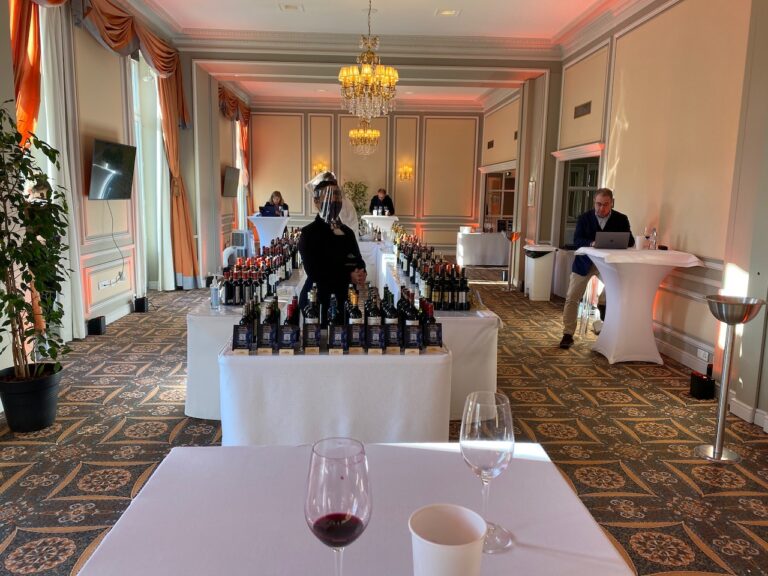
To work. The tastings follow the same format as last year, with several function rooms being used for different groups. With the hotel being closed there’s plenty of space, so sensible distancing and being served by sommeliers is standard. Large paper cups work perfectly well as spittoons, to be emptied regularly into the floor standing one.
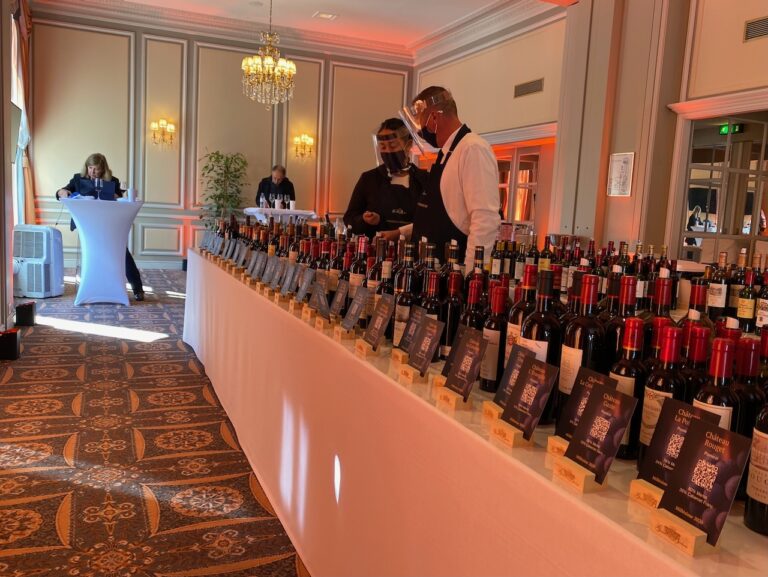
The main downside is that 130+ wines are to be tasted the same day, unless you decide to taste a smaller selection. Before Covid, the UGC press tasting was spread over two days.
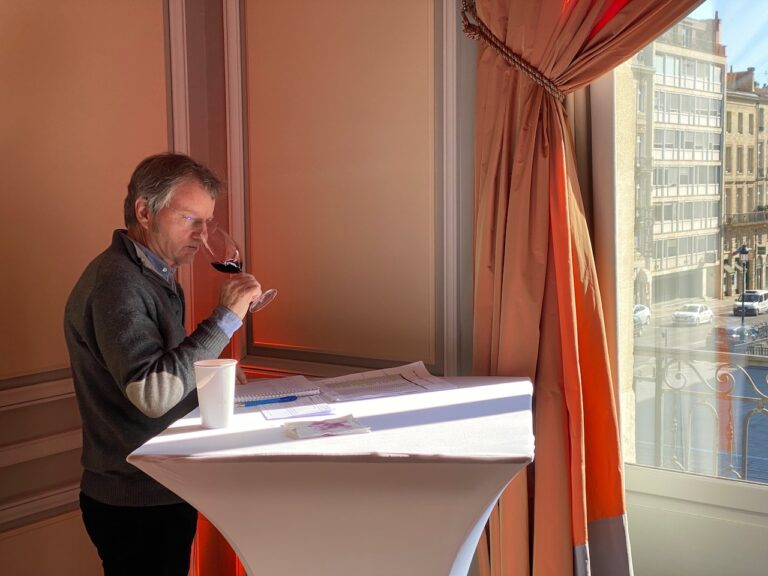
Naturally, all the tasters are locally based. James Lawther MW, who lives not far from me, is reviewing some of the 2020 primeurs for Jancis Robinson MW’s website, along with Jancis and her colleague Julia Harding MW who are both tasting in London.
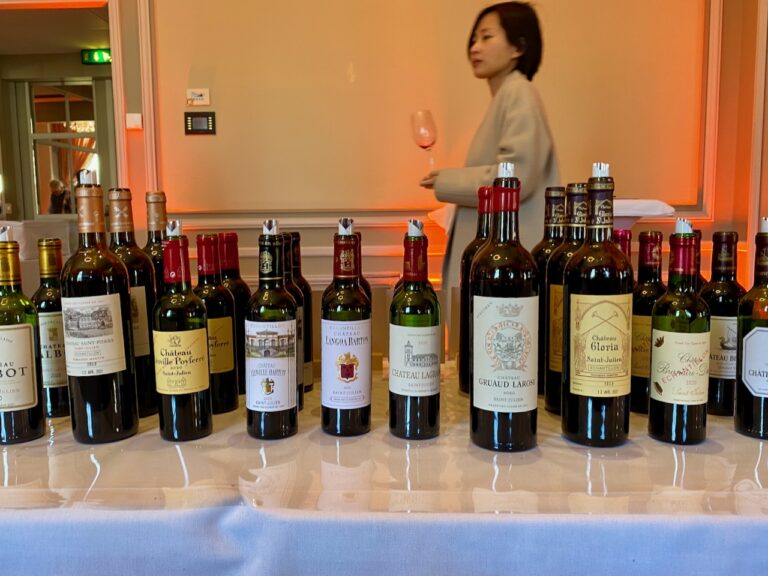
Tasting the barrel samples of the young wines like this in Bordeaux each Spring was something we in the trade used to take for granted. Now the bottles, half bottles – and smaller containers, like wine ‘tubes’ – are routinely couriered to the critics and wine merchants around the world.
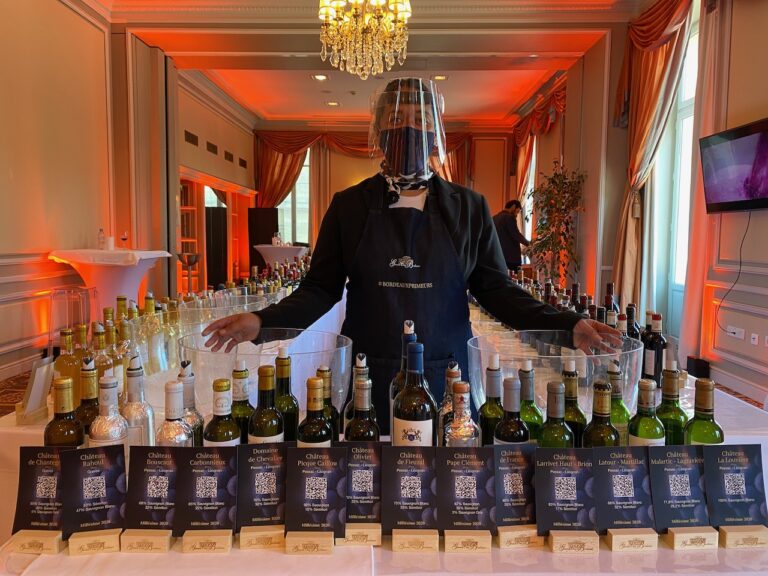
Merve and her colleagues did a better job than I could ever hope to do at home.
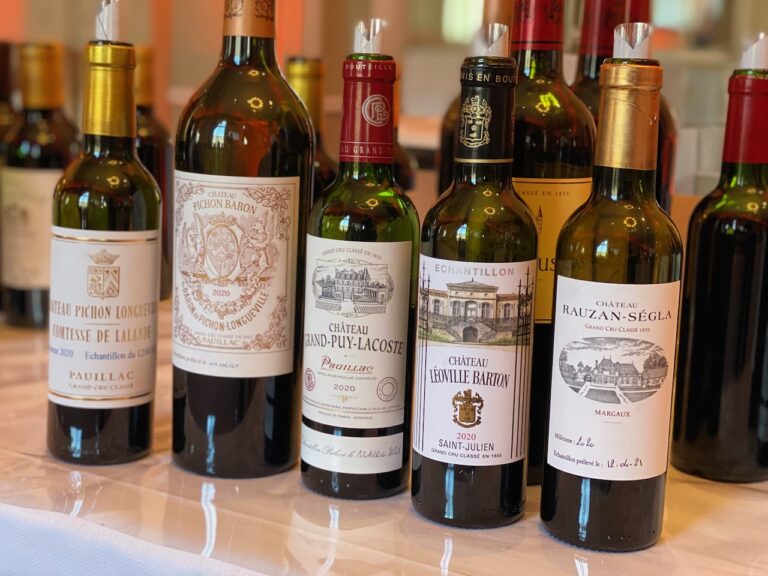
You can’t go too far wrong with the great terroirs and such Blue Chip names. These are excellent. However, 2020 is an inconsistent vintage on the Left Bank, in the Médoc: many of the wines are ‘correct’ but lack some joy, compared to 2019.
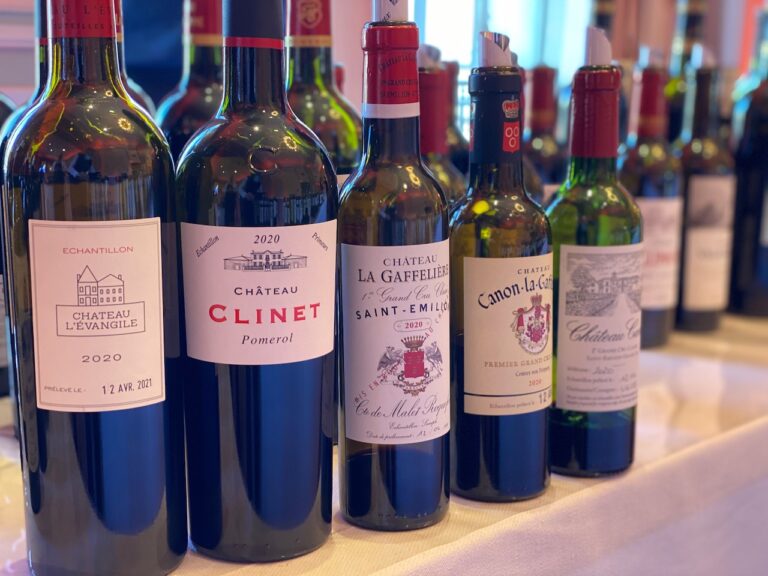
2020 is a hugely successful vintage on the Right Bank, in my opinion. It might be worth looking at how the weather was different on the Right Bank compared to the Left in my 2020 Weather and Harvest Report from last October.
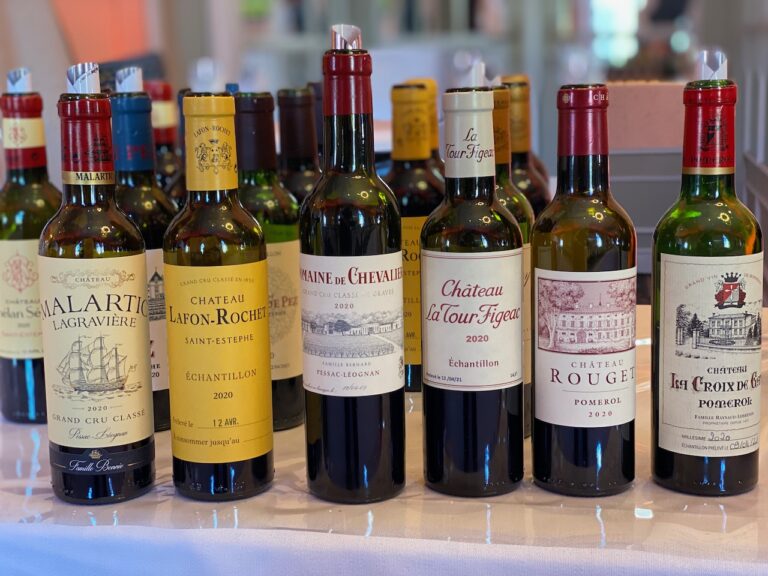
You don’t have to buy just the most famous labels to have real quality. These are delicious.
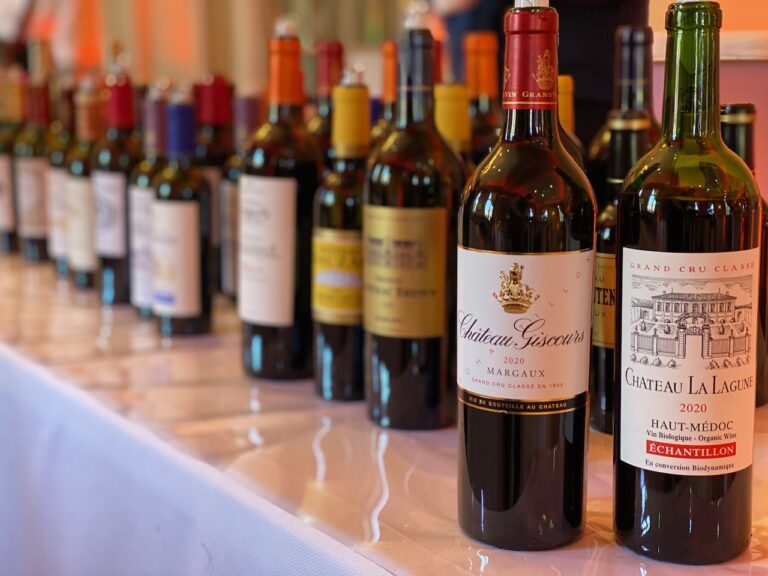
Being a geek, I like to taste wines from vineyards that are close to each other, even if they’re notionally in different appellations. Both very good indeed, incidentally.
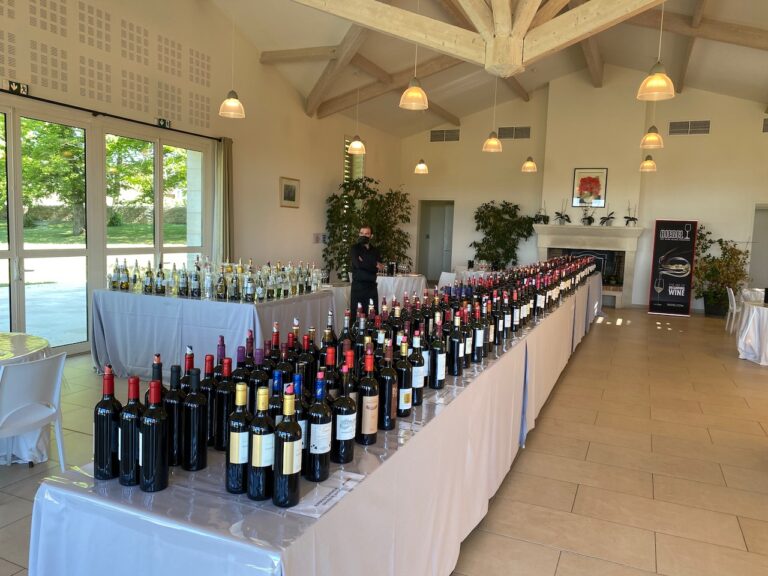
The Union des Grands Crus is the best known and most active association of châteaux. There are others too, with less famous labels, such as the Grand Cercle des Vins de Bordeaux. I tasted all these too, last weekend.
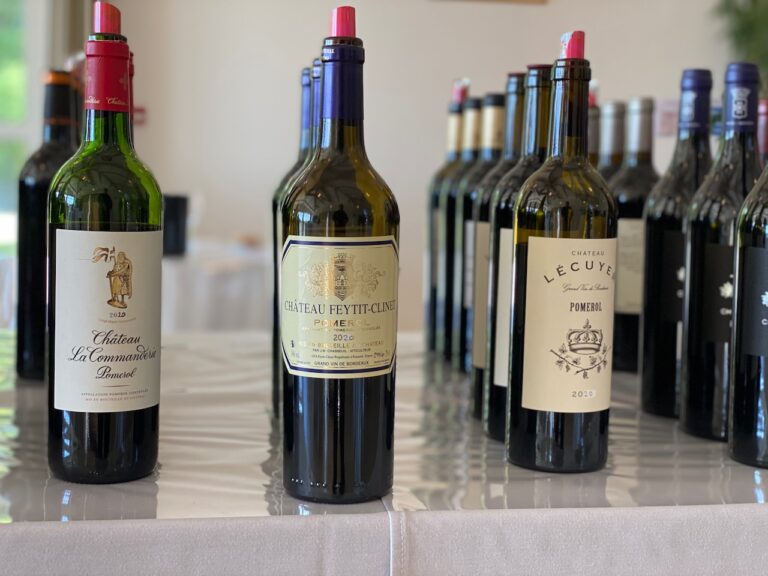
The standouts aren’t hard to spot.
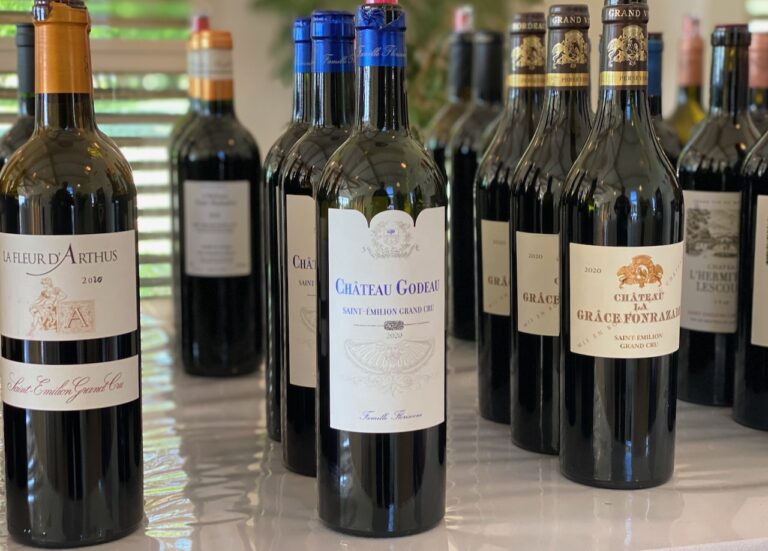
2020 is a very good vintage for Saint-Émilion. That’s a generalisation because it’s such a huge appellation but the quality of so many petits-châteaux is pretty high. Fronsac too.
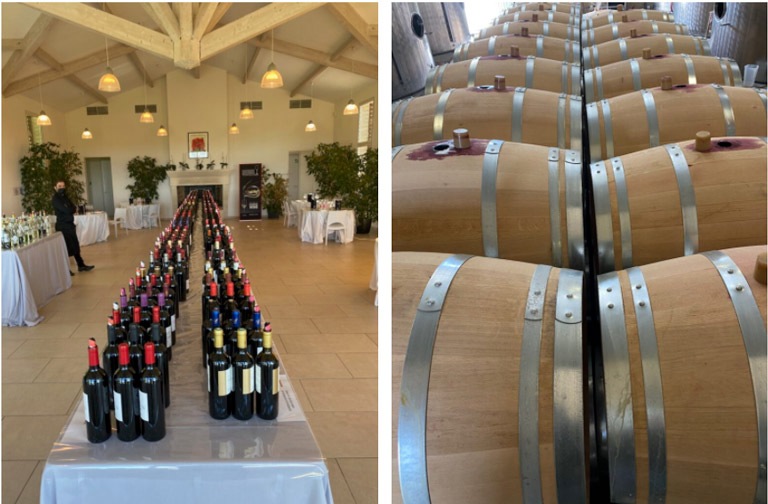
You wouldn’t normally think of things this way but a tasting of so many different wines is almost the opposite of tasting all the barrels of the same wine. Other than the fact that they’re all from the same vintage.
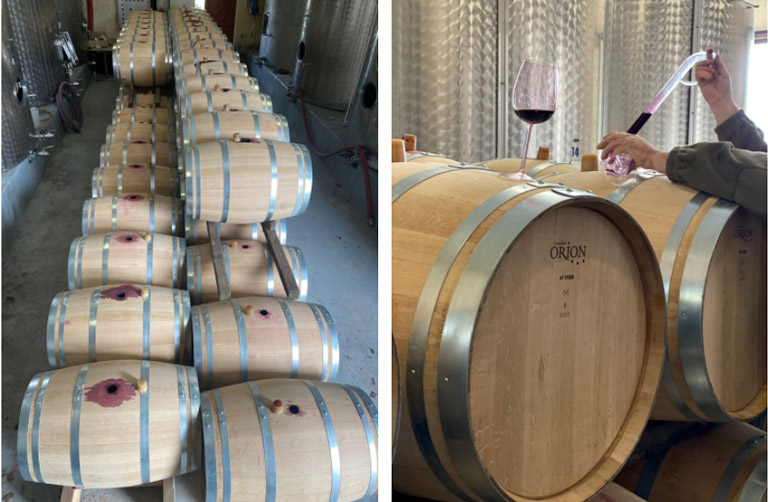
Tasting all 52 barrels of (our) Les Trois Hectares 2020. It’s actually easier than you’d imagine, once you get the hang of it – and you need help. We don’t sell it en primeur because we like to keep our options open, regarding the final blend.
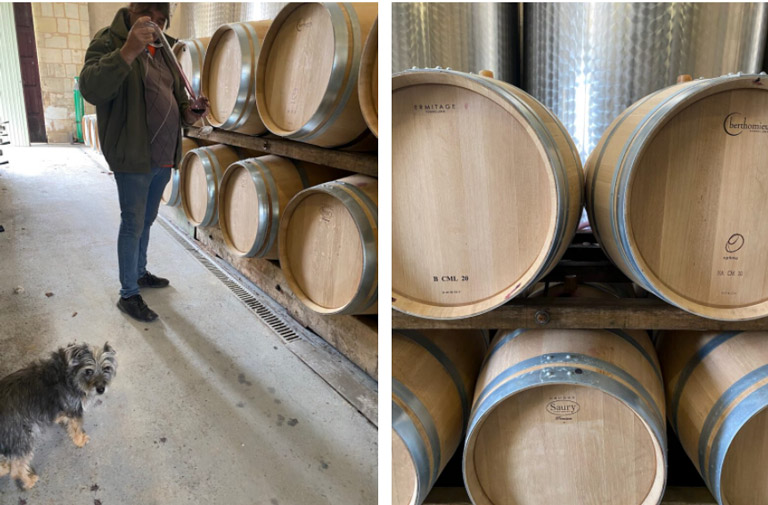
Half the barrels are new, and the other half a year old. They come from several different coopers. More anon.
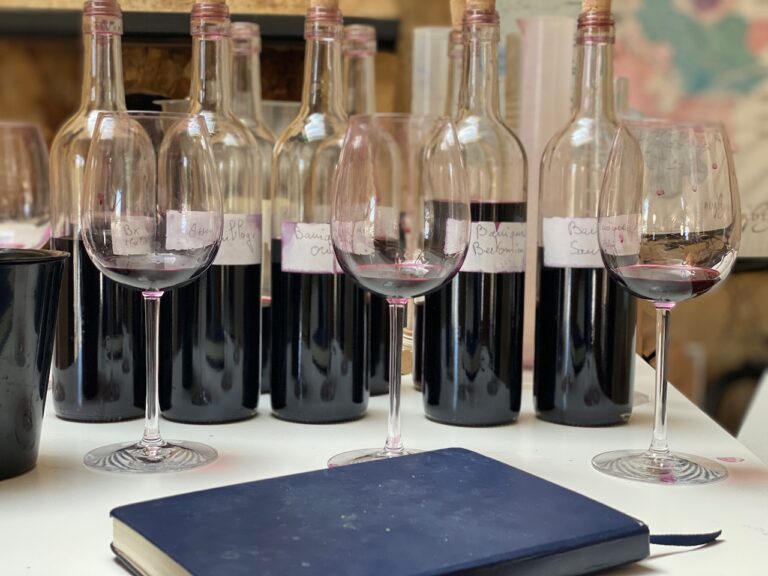
Then there’s the blending. At the moment, all 52 barrels will be used for the final assemblage.
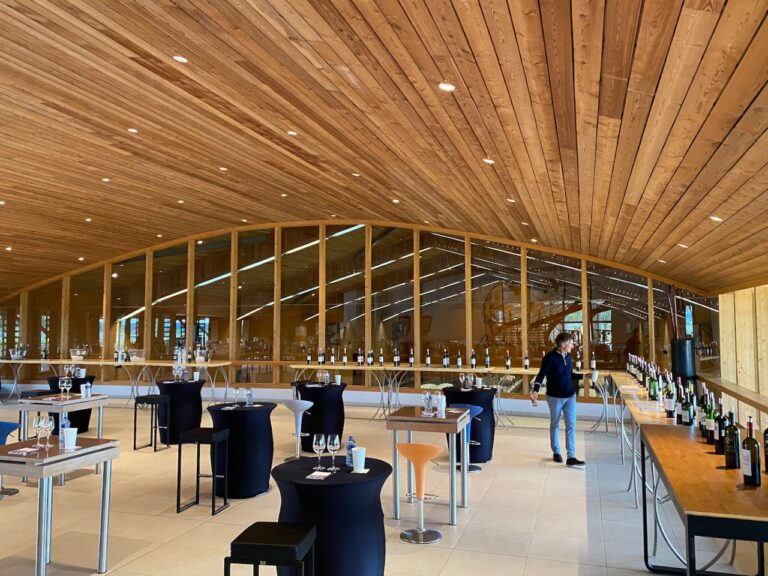
Back to the 2020 tastings, briefly, and here’s the end of the ‘appellation’ tasting of the red and white wines of Pessac-Léognan. This one was held at Château Rochemorin, and this is owner Jacques Lurton checking up on how the wines of his neighbours performed.
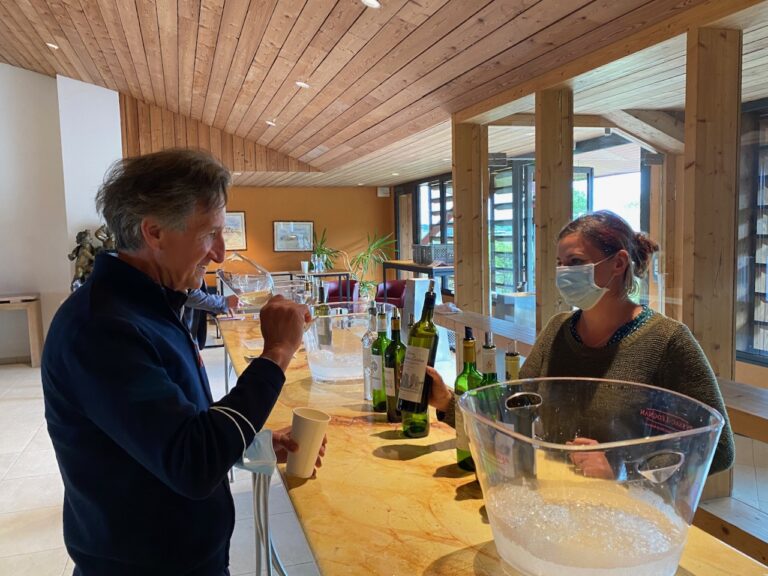
The legendary Lurton nose.
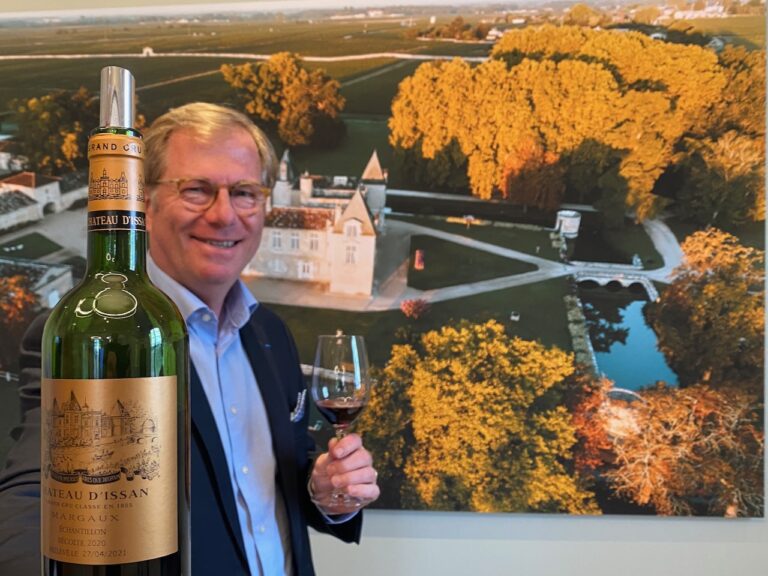
Nothing beats tasting wines at the Châteaux with the people that are responsible for them, though it would take forever and it’s fascinating to be able to compare wines from different châteaux side-by-side. This is Emmanuel Cruse at Château d’Issan in Margaux. Tasting in situ is harder to achieve at the moment, of course, but the leading estates have done a pretty job good job of getting the samples to critics and chatting to them over Zoom and the like.
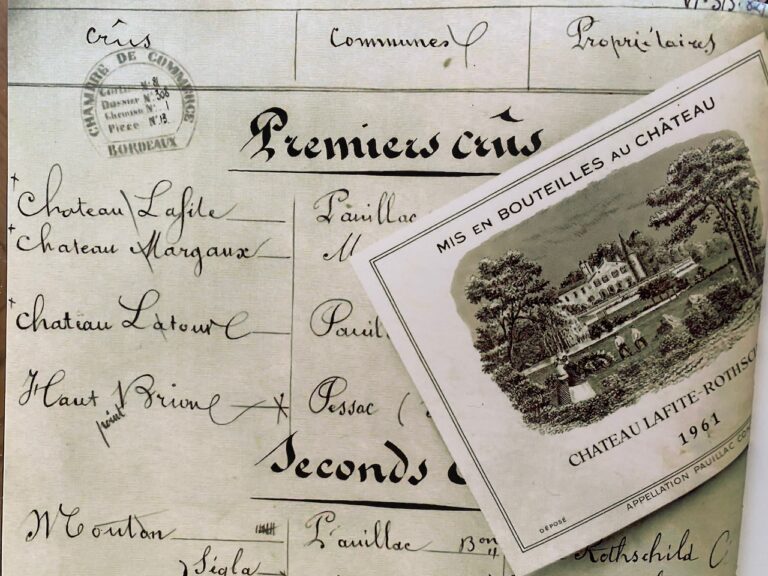
A footnote to the fiasco that was the European Super League this month, when 15 football clubs wanted to create a new league from which they couldn’t be relegated, and the plan, once it was made public, lasted less than 48 hours. The 1855 classification of the wines of Bordeaux might not have set out this way but Châteaux Lafite, Margaux, Latour and Haut Brion – and Mouton since 1973 – are all still at the top of the pile. Extraordinary, really.
(Photo of the inside cover of Jane Anson’s ‘Bordeaux Legends’.)

